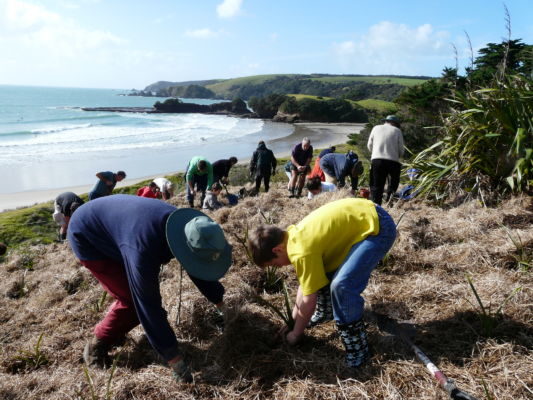Has your community group identified specific longterm conservation goals? What outcomes do you expect to see from the many hours of volunteer work that your team puts in? Have you thought about how your project contributes to the wider New Zealand Biodiversity Strategy?

In a recent report published in the New Zealand Journal of Ecology, researchers Chris Jones and Nick Kirk looked at the potential contributions community conservation projects can make to our national biodiversity goals.
“In New Zealand, as in other developed nations, community-led conservation groups work to maintain and restore ecosystems and conserve indigenous biodiversity. These groups receive support in the form of materials, technical advice and funding from central and local government and non-governmental organisations, who are required increasingly to demonstrate delivery of benefits or conservation returns on investments.”
The labour input of such community efforts is huge – and is likely to be even higher today than in the 2007 survey results quoted in the article.
“In a 2007 survey of DOC community partners, 201 groups responded, reporting that they involved 6232 volunteers who gave 174 812 hours of labour over a year, equating to a total financial contribution of NZ$15.8 million.”
It seems that the ‘financial contribution’ of the labour can be estimated, but what do we know about the conservation contribution?
“There is little empirical evidence for the objective evaluation of the effectiveness of community-based programmes in achieving national conservation outcomes. In the absence of such evidence, we investigated whether information on community groups’ desired outcomes, gleaned from a sample of applications to a major national fund, could indicate their likely contributions to the outcomes in the national New Zealand Biodiversity Strategy.”
The researchers assessed groups’ outcomes in terms of their alignment with those in the Biodiversity Strategy and against SMART (specific, measurable, achievable, relevant and time-bound) project evaluation criteria. So how did community groups line up with the NZBS? The report card reads something along the lines of ‘Okay – but could do better’.

“Of 89 individual project proposals, 53% contained one or more identifiable outcomes that were aligned to the national strategy; the remainder contained no clear, identifiable outcome statement. Project outcomes, where present, tended to focus on increasing awareness of and participation in conservation, and making positive changes to terrestrial and freshwater habitats and to indigenous species. In our sample, none of the aligned project outcomes met all five SMART criteria, only seven were measurable and only three were time-bound.”
So what does that mean – and why does it matter?
“The absence of clear outcome statements in many, and of measurable outcomes in most, community group applications means that funders would struggle to conclude anything about conservation returns on investments from the information provided. Without clear and measurable outcomes, empirical evaluation of projects’ effectiveness is impossible. We suggest that funding providers can facilitate project evaluation by presenting requirements and advice for specifying project outcomes in applications. Furthermore, they should provide technical and financial support for identifying what to monitor and how to do so.”
The full evaluation is published in the New Zealand Journal of Ecology and is freely available online.

